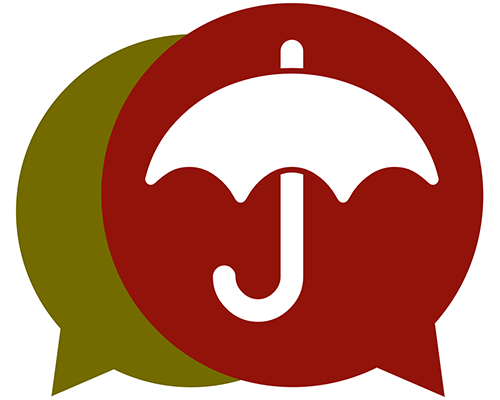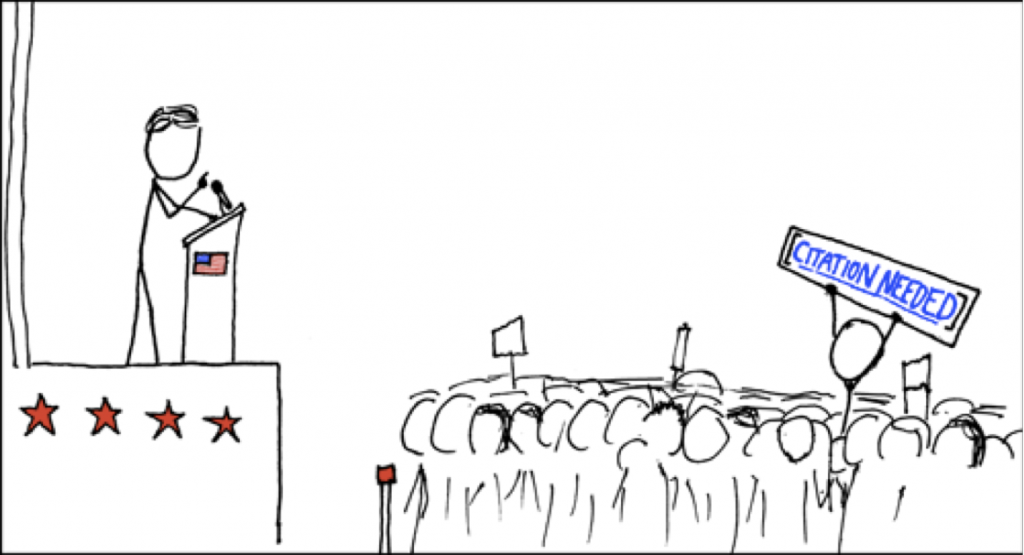34 Ethical Use and Citing Sources

You likely know that research projects always need a reference or a works cited page (also called a bibliography). But have you ever wondered why?
There are some big picture reasons that don’t often get articulated that might help you get better at meeting the citation needs of research projects. It’s helpful to understand both the theory behind citing, as well as the mechanics of it, to really become a pro.
Tip: How to Cite Sources
This section introduces the concept of citing sources, so you can begin your search for sources with it in mind. See the next section, How to Cite Sources for examples and the steps for citing appropriately.
In everyday life, we often have conversations where we share new insights with each other. Sometimes these are insights we’ve developed on our own through the course of our own everyday experiences, thinking, and reflection. Sometimes these insights come after talking to other people and learning from additional perspectives. When we relate the new things we have learned to our family, friends, or co-workers, we may or may not fill them in on how these thoughts came to us.

for arguments is often not provided. (Image source: XKDC)
Academic research leads us to the insight that comes from gaining perspectives and understandings from other people through what we read, watch, and hear. In academic work we must tell our readers who and what led us to our conclusions. Documenting our research is important because people rely on academic research to be authoritative, so it is essential for academic conversation to be as clear as possible. Documentation for clarity is a shared and respected practice, and it represents a core value of the academy called “academic integrity.” It is a way to distinguish academic conversations (or discourse) from everyday conversations (or discourse).
It is hard to talk about citation practices without considering some related concepts. Here are some definitions of those concepts that are often mentioned in assignments when citation is required.
What Is Academic Integrity?
Different universities have different definitions. Ohio State University uses this definition:
Academic integrity is a commitment, even in the face of adversity, to five fundamental values: honesty, trust, fairness, respect, and responsibility. From these values flow principles of behavior that enable academic communities to translate ideals into action.
Please take a few moments to read the Office of Undergraduate Education web page that describes these values in more detail.
In other words, you must take full responsibility for your work, acknowledge your own efforts, and acknowledge the contributions of others’ efforts. Working/Writing with integrity requires accurately representing what you contributed, as well as acknowledging how others have influenced your work. When you are a student, an accurate representation of your knowledge is important because it will allow both you and your professors to know the extent to which you have developed as a scholar. Part of that development is evidenced by how you apply the rules for acknowledging the work of others.
What Is Academic Misconduct?
As you might imagine, academic misconduct is when you do not use integrity in your academic work. Academic misconduct includes many different unacceptable behaviors, but the one most relevant to what we are discussing here is submitting plagiarized work:
Submitting plagiarized work for an academic requirement. Plagiarism is the representation of another’s work or ideas as one’s own; it includes the unacknowledged word-for-word use and/or paraphrasing of another person’s work, and/or the inappropriate unacknowledged use of another person’s ideas.
To see the full definition of academic misconduct, refer to the Ohio State University Code of Student Conduct.
Note: Check Your Syllabi
You might have noticed a reference to the Code of Student Conduct on several of your syllabi, as faculty are asked to include this statement for your benefit:
It is the responsibility of the Committee on Academic Misconduct to investigate or establish procedures for the investigation of all reported cases of student academic misconduct. The term “academic misconduct” includes all forms of student academic misconduct wherever committed; illustrated by, but not limited to, cases of plagiarism and dishonest practices in connection with examinations. Instructors shall report all instances of alleged academic misconduct to the committee (Faculty Rule 3335-5-487). For additional information, see the Code of Student Conduct.
What Is Plagiarism?
Plagiarism is defined by the OSU First Year Experience Office in this way:
At any stage of the writing process, all academic work submitted to the teacher must be a result of a student’s own thought, research or self-expression. When a student submits work purporting to be his or her own, but which in any way borrows organization, ideas, wording or anything else from a source without appropriate acknowledgment of the fact, he/she is engaging in plagiarism.
Take time to look at the full definition, which also describes another form of academic misconduct called “collusion.”
Plagiarism can be intentional (knowingly using someone else’s work and presenting it as your own) or unintentional (inaccurately or inadequately citing ideas and words from a source). It may be impossible for your professor to determine whether plagiarized work was intentional or unintentional. But in either case, plagiarism puts both you and your professor in a compromising position.
While academic integrity calls for work resulting from your own effort, scholarship requires that you learn from others. So in the world of academic scholarship you are actually expected to learn new things from others AND come to new insights on your own. There is an implicit understanding that as a student you will be both using others’ knowledge as well as your own insights to create new scholarship. To do this in a way that meets academic integrity standards you must acknowledge the part of your work that develops from others’ efforts. You do this by citing the work of others. You plagiarize when you fail to acknowledge the work of others and do not follow appropriate citation guidelines.
What Is Citing?
Citing, or citation, is a practice of documenting specific influences on your academic work. See How to Cite Sources for details.
In other words, you must cite all the sources you quote directly, paraphrase, or summarize as you:
- Answer your research question
- Convince your audience
- Describe the situation around your research question and why the question is important
- Report what others have said about your question

